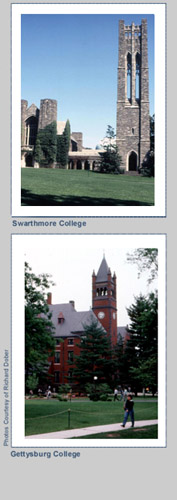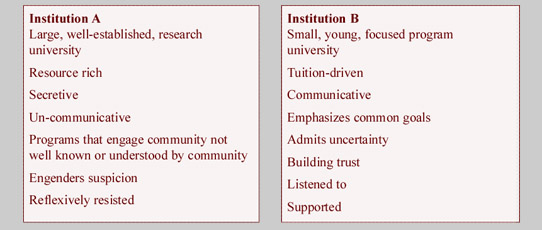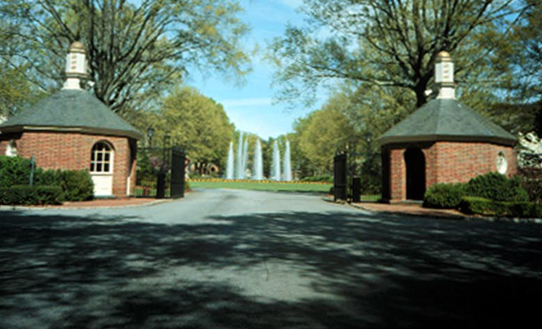|
Linking |
||||||
Charles Craig
If you have
reactions or ideas to share, please let us know what you think by e-mailing:
editor@dlmplanners.com |
||||||
PLANNING
TO STRENGTHEN |
|||||||
Municipal Government Neighborhood Associations Two Schools — Two Approaches |
|||||||
|
An
Intentional Front Door In many cases, the front door is an architectural gesture while other doors are used for day-to-day activities. Subtle and direct clues, cues, and cultural symbols combine to help identify the main entrance. These include landscape and pathways, an architectural element of glass and height, material, color, signage, and sometimes a platform and stairs. In ancient times in Egypt and Asia, large statues of gods and goddesses flanked the door and At the campus scale, a related question can be asked: does your campus have a front door — an easily recognized main entrance? Should it have? Some campuses have a definite main entrance — Furman University, for example has one of the most attractive. Other campuses have several entrances, some more defined than others — St. Lawrence for example. A number of urban campuses have no discernable entrances as their buildings are often interspersed with other property owners and buildings making it difficult to define the campus boundaries. For M.I.T., the front door to the campus really is the front door to a building — 77 Mass. Ave., under the Great Dome. Although not all campuses have, or should have, a front door, visitors to the campus should know when they have arrived through physical and visual clues that help orient the visitor and guide them to their destination with parking nearby. A number of institutions have found it beneficial to have the Admissions office near the entrance, easily identifiable and accessible.
|
||||
| News | ||||||
| DLC+A
44th Anniversary This month DLC+A celebrates 44 years of continuous service to educational, scientific and cultural institutions worldwide. Owned and operated by the principals, committed to participatory planning and design processes, we offer our clients an unusual blend of expertise and creativity, tailored to their needs, resources, and circumstances. |
Cyprus
International University A team from DLC+A traveled to Northern Cyprus in January to complete a campus master plan for Cyprus International University. The university, established in 1996 and located on the island of Cyprus, offers accredited undergraduate and graduate programs. |
|||||
| For
Want of A Nail Dean & Provost published Arthur J. Lidsky's article, “Campus Planning Without an Academic Plan is Not Planning” in its February issue. For a copy of the article please e-mail editor@doberlidskycraig.com |
2005
NoName Conference Charles Craig will once again be speaking at the NoName Conference, held this year in Nashville, Tennessee. He will present A Case Study of Transformation: Realization of Campus Renewal at Spring Hill College with the College's Executive Vice President, Charmane May on 16 May at 10:45 AM. The NoName Facilities Conference is organized by an independent group of higher education institutions and consulting representatives to share ideas and discuss the latest campus developments and trends. |
|||||
| Links Newsletter Archive Related Topics About Us Additional Services |
© Copyright 2005 DOBER LIDSKY MATHEY Creating Campus Solutions |
|||||||
464 Common St., Suite 336
|
||||||||







